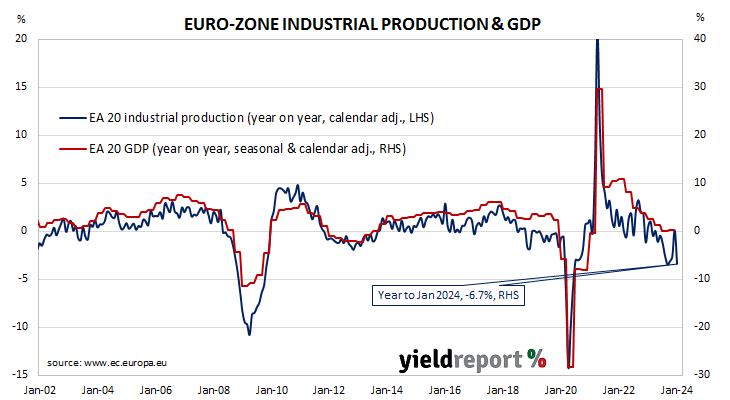Summary: Euro-zone industrial production down 3.2% in January, worse than expected; down 6.7% on annual basis; all major categories down except energy; German, French 10-year yields up.
Following a recession in 2009/2010 and the debt-crisis which flowed from it, euro-zone industrial production recovered and then reached a peak four years later in 2016. Growth rates then fluctuated for two years before beginning a steady and persistent slowdown from the start of 2018. That decline was transformed into a plunge in March and April of 2020 which then took over a year to claw back. Production levels in recent quarters have generally stagnated in trend terms.
According to the latest figures released by Eurostat, euro-zone industrial production contracted by 3.2% in January on a seasonally-adjusted and calendar-adjusted basis. The fall was greater than the expected 1.8% contraction and in contrast with December’s 1.6% increase after it was revised down from 2.6%. On an annual basis, the expansion rate decreased from December’s revised rate of 0.2% to -6.7%.
“Energy production lifted slightly year-on-year but all other major categories fell, including a 12.1% year-on-year fall in capital goods and an 8.4% fall in durable consumer goods,” said ANZ senior economist Blair Chapman.
German and French sovereign bond yields both rose on the day despite the figures. By the close of business, the German 10-year bond yield had gained 5bps to 2.37% while the French 10-year yield had added 3bps to 2.81%.


